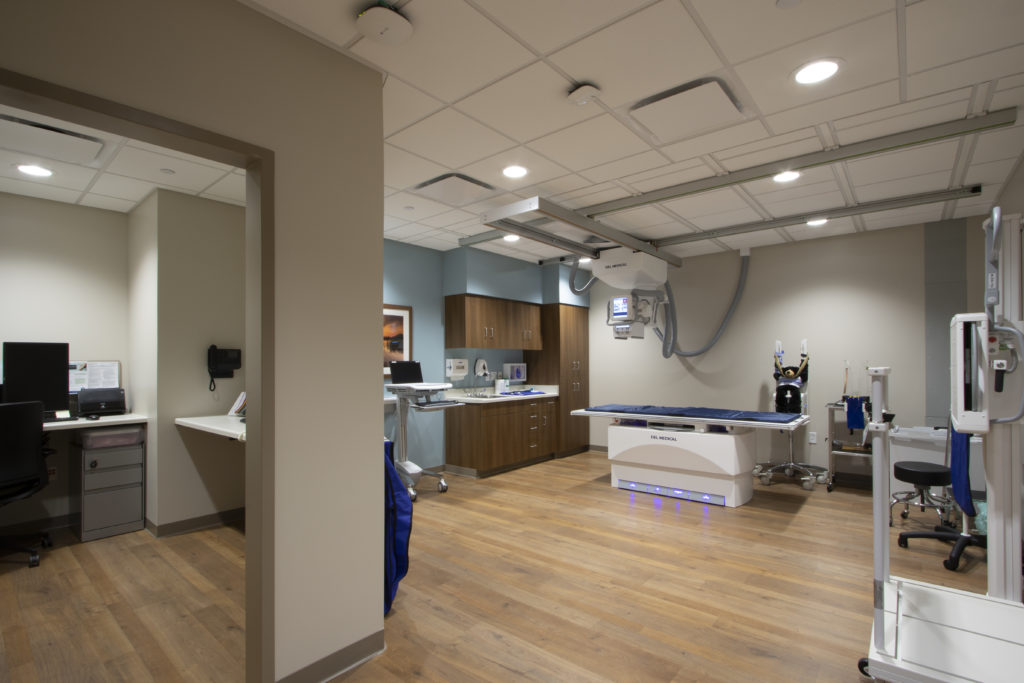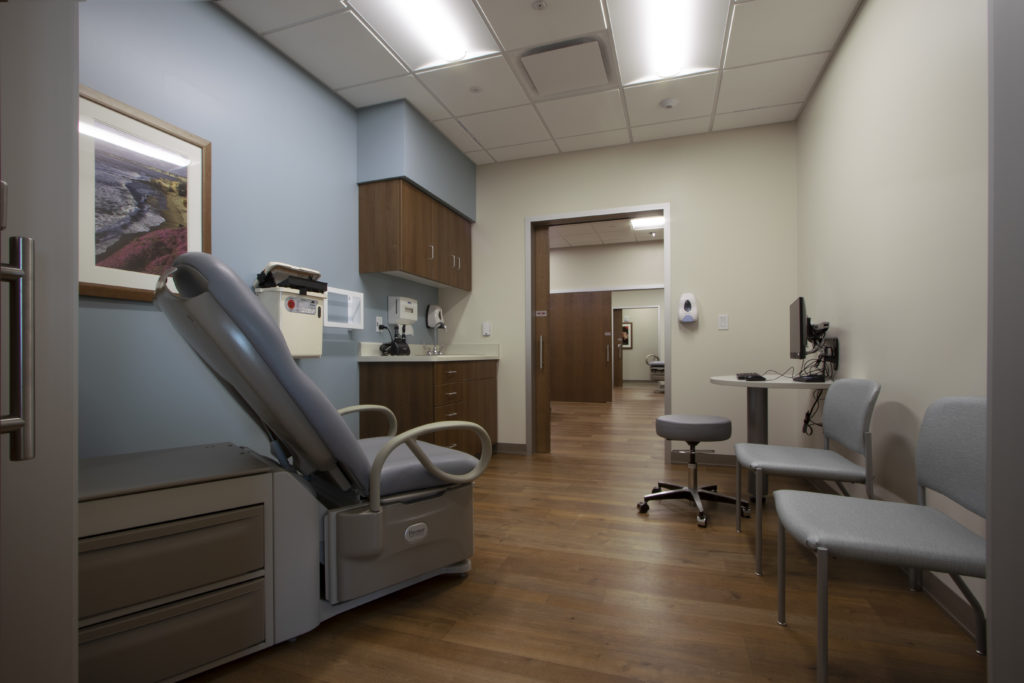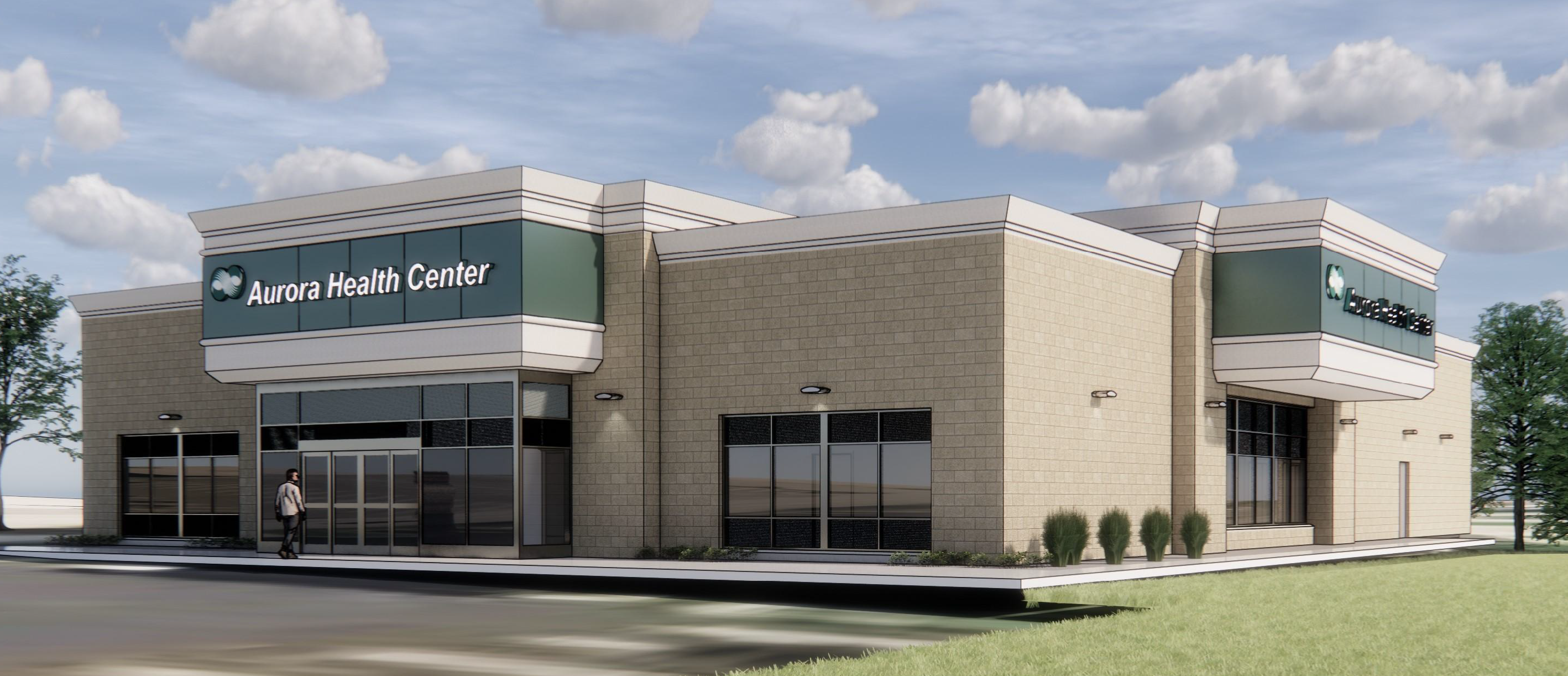With many retailers downsizing or going out of business over the past several years (and accelerating in 2020), more retail space is becoming available. At the same time, many healthcare providers are looking to fill service gaps in the community by adding new clinic locations. Since retail spaces are typically located along public transportation routes and in commercial zones and provide easy access for potential patients, adaptive reuse of these buildings offers a great solution. Vacant retail space also provides an advantage for healthcare systems creating new facilities as these buildings usually offer open floor plans and require less demolition. These spaces can be more cost-effective for reuse than renovating another building type.
Aurora Health’s newest healthcare facility, located in a former Pier 1 Imports store near the Regency Mall in Racine, is an excellent example of adaptive reuse. Zimmerman Architectural Studios designed the 9,600-square-foot clinic which will provide primary care, urgent care, imaging, and on-site laboratory services. This facility uses a patient self-rooming model for the 11 exam rooms. When patients arrive and check-in, they are directed to the exam room where they will be seen. This model will reduce the wait times and the need for waiting area space. The clinic features a collaborative staff work area surrounded by exam rooms, which reduces footsteps for clinical staff and improves communication. Our team applied AAH’s interior design standards to provide a warm and welcoming clinic environment.

Along with the interior renovation, the exterior of the building was upgraded. The vestibule was expanded to enhance patient circulation. New windows were cut in along the front facade and along the back where the staff offices and break room are located to bring more natural light inside. New air handling units were installed along with a new emergency generator and electrical transformer added to the site to support the utility needs of the clinic. The parking lot footprint remained the same but it was upgraded with new paving and parking lot lights. New landscaping and exterior lights were added to the building to improve the exterior aesthetics.
Identifying existing utility gaps and developing solutions is key to successfully redeveloping vacant retail space into healthcare. On this project, the design team and client identified the need for an emergency generator. The existing site was very constricted so the location of the generator was reviewed and evaluated by the team to find the best solution. The final location was selected because of the proximity to the electrical room, which reduced wire lengths and costs. In addition, the building needed its electrical transformer installed. The existing building shared a transformer with the neighboring building. This installation required close coordination with the electrical company and the neighbor to install it during off hours to eliminate downtime. The cutover went well and was done in a shorter period than originally anticipated.

By adaptively reusing vacant retail spaces, healthcare systems can add new clinics in locations that are currently underserved and provide better access to services for their patients. Zimmerman Architectural Studios is excited to be part of another successful project with Aurora Health, working side by side with our MEP engineers from Harwood Engineering and general contractor C.G. Schmidt.
Senior Project Architect Randy Schlee, AIA, LEED AP BD+C | LinkedIn

